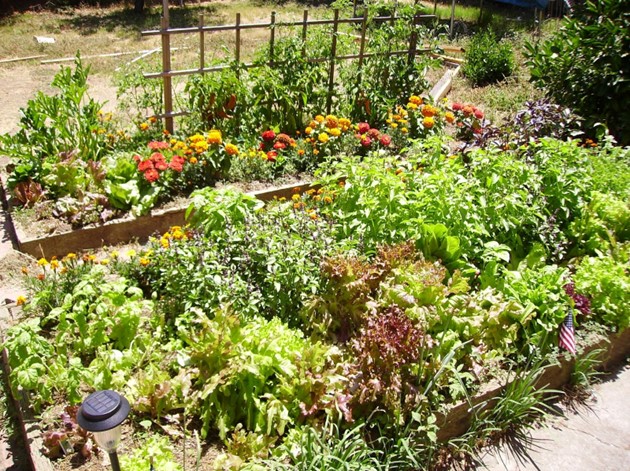Vegetable Gardening
Vegetable gardening has lately become just as popular as going to the grocery store for produce. Vegetable gardening can produce vegetables that are usually cheaper than store bought, and vegetables from a home vegetable garden definitely taste better by far.
Vegetable gardening is no different than growing herbs or flowers and if the proper steps are taken and the plants are given the proper care they will flourish and produce very tasty vegetables.
First you must decide what size of garden you wish to plant and then select a place for it; somewhere that has good drainage, good air flow, and good, deep soil. It also needs to be able to get as much sunlight as possible.
Because vegetable gardens have such tasty rewards, many animals, such as dogs, rabbits, deer, and many others will try and get to your veggies. One way to prevent this is to surround your garden with a fence, or put out a trap to catch mice, moles, and other animals.
Before planting, the soil must be properly prepared. Good soil for vegetable gardening is achieved by cultivation and the application of organic materials. The soil must be tilled (plowed) to control weeds and mix mulch into the soil. If you have a small garden, spading could be a better bet than plowing.
Mulching is also a vital part of soil preparation. Organic matter added to the soil releases nitrogen, minerals, and other nutrients plants need to thrive.
The most popular and best type of mulch you can use is compost. While the kind and amount of fertilizer used depends on the soil and types of plants, there are some plants that have specific needs; leafy plants, like cabbage, spinach, and lettuce usually grow better with more nitrogen, while root crops like potatoes, beets, turnips, and carrots require more potash.
Tomatoes and beans use less fertilizer, while plants like onions, celery, and potatoes need a larger amount.
One thing that is vitally important in vegetable gardening is garden arrangement. There is no single plan that will work for every garden due to varying conditions.
One popular way to arrange a vegetable garden is to plant vegetables needing only limited space together, such as radishes, lettuce, beets, and spinach, and those that require more room together, such as corn, pumpkins, and potatoes.
Try and plant tall growing plants towards the back of the garden and shorter ones in the front so that their sunlight does not get blocked.
When you are finally ready to begin planting your vegetable garden, make sure and plant at the right time of year. If you are dying to get an early start, you may want to begin your garden inside in a hotbed and then transplant when the weather permits.
After you are finished planting, make sure your vegetables receive the appropriate amount of water, which depends on the type of plant. Most plants will need the equivalent to about an inch of water per week.
Weeds must be controlled in vegetable gardening because they will take up water, light, and nutrients meant for the vegetables and they often bring disease and insects to the garden.
You can get rid of weeds by cultivation or mulching. To protect against disease and insects you can buy seeds that are disease resistant or use controlled chemicals.
Vegetable gardening is many people’s favorite form of gardening because you can actually taste the fruits of your labor. Vegetable gardening is not that expensive to start and the taste of home-grown veggies definitely beat that of supermarket vegetables.
Your vegetable gardening days will be full of produce if you take the proper precautions when planting and continue maintenance of your garden.
Regards, Coyalita
Copyright © 2023 Sunrise-Sunset-Nature-Gardens.com. All Rights Reserved
Privacy Policy – Earning Disclaimer – Terms of Use – Contact Us

